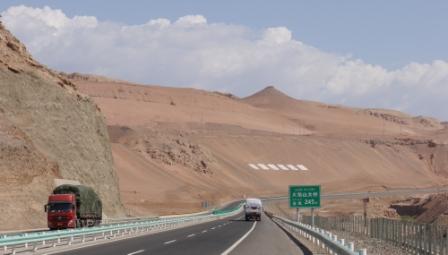Stubborn? I’d half regretted asking whether or not the Caucasus lay in Europe or Asia. Resigned myself to accepting it to be a geo-political question, rather than the straightforward "yes no" one I’d hoped for. This time it was deserts, and I’d already unearthed a wide diversity of opinion. I’d also thought the geography of the Central Asian states a bit tricky, their sometimes arbitrary borders, ethnic groups spread across nations. But simple sand seemed much more difficult to grasp.
Question was, which desert was I in? That I was in one was irrefutable. Arid, sparse vegetation, little rainfall. What was less clear was its name, if indeed it had one. I’d sought to simplify the problem by starting with Basins. There were a few. Imagined them to be large sand pits, so, in all probability, it seemed likely they’d be closely allied to the various deserts. It was a theory. Of sorts.

There was the Turpan Basin. I’d crossed it a little while ago, spent a day in its only decent sized town. Mostly below sea level so also termed a Depression. To the west the Tarim Basin, home of the Taklamakan desert. Little dispute about that.
To the east of Turpan lies the city of Hami – Kumul in the local Uyghur dialect. It too sits in a Depression. Beyond the Hami Basin are what most seem to regard as the western fringes of the Gobi desert. Fifth largest in the world, and Asia’s biggest. Much of it is in Mongolia, encroaching on the north western and north central Chinese provinces of Gansu and Inner Mongolia respectively. My route east of Hami as far as the city of Lanzhou. Over a thousand miles.
Some cite the Gobi as extending as far as the Pamir mountains in the west, encompassing the Turpan and Hami Basins, and the Taklamakan desert. I’m not convinced. Reckon there are two distinct deserts – the Gobi and Taklamakan – separated by the Turpan and Hami Basins. The dividing region may not have a convenient label, but, by any recognised definition, it’s still desert. No doubt about that.

